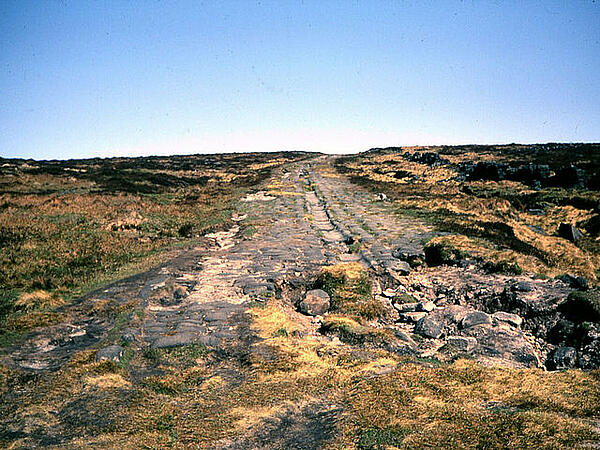Roman Roads
Among their many talents and inventions, the Romans were the first to build roads in Britain (formerly known as Briton). There are still existing Roman roads today over 2,000 years later due to being so well made.
The citizens of Rome invested effort into their road building for trading purposes - they frequently traded around Europe and, as they sought to take over the continent through military conquests, the Romans needed to move their various armies quickly from place to place, which could only thanks to well constructed roads. Another purpose for the road system was so that emperors could send messages and orders quickly to the empire.
Once arriving in England, there were no roads for the Romans to use. The only available transport routes were the basic muddy paths and tracks that were used by the Britons that had been exposed to all weather conditions and were of a poor quality.

The roads that the Romans built were well known for being straight and of a good quality, though instead of building through obstacles they would comes across they would typically opt to build around it. The materials available would normally dictate the construction details, but the standard instructions were always the same. In towns or areas of heavy use, cobbled roads were common but gravel was used most often.
As there were no compasses or maps to assist them with building roads, instead they used a groma which was formed of two pieces of wood that were nailed together, forming a cross. Each wooden part had lead weights attached to the ends, so when one lead weight from the same piece was in line with the one in front of it, the surveyor could be sure he had a line that was straight.
Roman soldiers did the majority of the building work so they could be relied on for their expertise and willingness to create the best roads for Rome.
Though roads were frequently used all through the empire, they were mostly walked upon as the alternatives of chariots and horses were too expensive for the majority of people. The roads were especially designed to allow two chariots to pass by on either side of the road.
The main roads built went from London to York (via Lincoln) London to Wroxeter, London to Dover and Exeter to York (via Bath, Cirencester and Lincoln).
When the Romans departed Britain, the Britons would not use the roads made by them. Villas, baths and other buildings were looked down on by the British simply because they were associated with Rome. They were also not aware of how to keep the roads in good condition but even so, the roads still lasted for centuries thanks to the Romans’ high quality craftsmanship.
See also: Roman Engineering
MLA Citation/Reference
"Roman Roads". HistoryLearning.com. 2026. Web.
